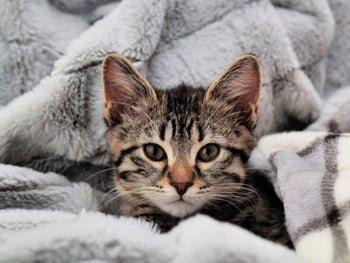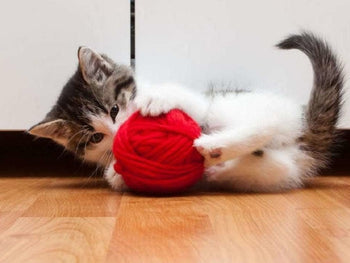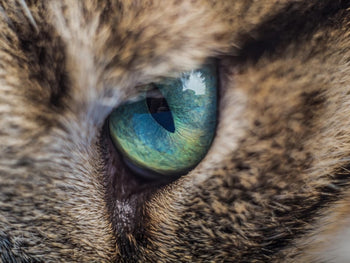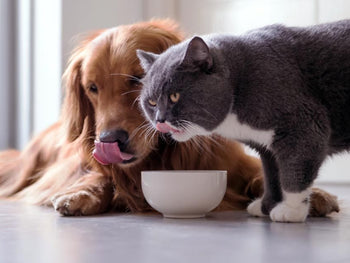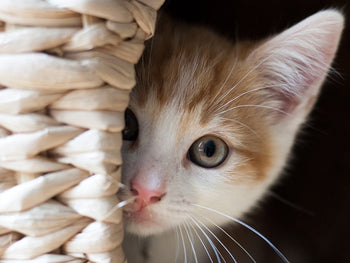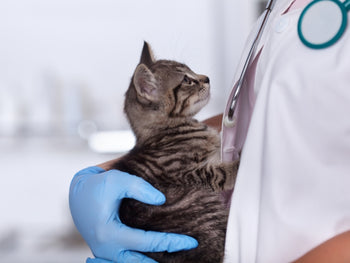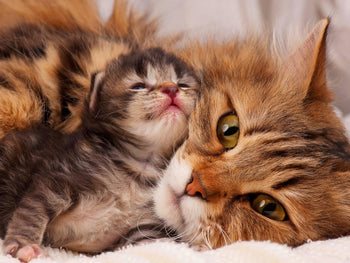Spaying (also know as ovariohysterectomy) is a commonly used population control method for cats which involves the removal of the ovaries along with the uterus. It's a fairly simple surgical procedure that could be performed by most veterinary clinics around the globe without complications. That being said, in the aftermath of a standard spay operation, a lot of people detect an unusual sag on the belly of their cat. For many cat owners, the sag seems to be a clear symptom of hernias and "cat hernia after spay" inevitably become a hotly debated subject. So what is the truth behind this rather unnerving phenomenon?
You intend to take your cat to the local veterinarian for spaying but the issue of "cat hernia after spay" make you feel slightly anxious? Well, if you need a scientific analysis of the appearance of sags after spaying, you come to the right place. This article would analyze the most notable spaying complications, sagging, in great detail so you know exactly what to do. Moreover, you would be introduced to the principle of spaying as well as some post-operative care tips and tricks. Take a look at the provided details and you could confidently take your cat to a veterinary clinic for spaying.
Check us out for astonshing Cat Tips & Facts
Belly Sagging: Causes And Solutions
Overall, it's relatively not uncommon for swellings/sags to develop on the belly of cats that are recently spayed.
A firm non-pain lump is often the result of suture reaction (the way the cat body reacts to suture). As a result, you don't have to do anything except waiting for the lump to slowly shrink by itself. Nonetheless, the presence of the swellings/sags could also indicate 2 other issues: Hernia and Seroma
Hernias
Once the abdominal wall sutures of the cat break down, a hernia would appear under the form of a sag. It's essentially a collection of fat, intestine and possibly other internal organs that manage to escape the abdominal cavity. Depending on the situation, the effect of hernias may range from negligible to life-threatening. So why hernias could occur after a spay operation then? Well, a hernia would develop if the clinic surgeons use the wrong type of suture material or simply mess up the closing of suture lines. Hernias could also form if you fail to keep the cat reasonably calm and inactive during the entire healing process.
To take care of hernias, it's highly likely that surgery would be needed to relocate all stranded organs and restore the cat abdominal walls. Once it's done, your "cat hernia after spay" issue should be gone for good.
Seromas
Similar to hernias, seromas often develop right after spaying and it could be caused by the surgeons or the owners. When the surgeons leave too much space in the cat fat layer or the owner let the cat run around too much, seromas would form. The average seroma lump tends to contain body fluid and therefore it's much easier to take care of compared to "cat hernia after spay". There is no need for special treatment since seroma would steadily shrink as the fluid is reabsorbed by the body.
You should not attempt to burst the seroma lump using a needle or similar tools because that could cause infections.
Spaying: What You Must Know
Preparing For A Spay Operation
As mentioned above, spaying is pretty straightforward so all you have to do is to give your cat a bath. Aside from that, you should not feed your cat the night before the operation to reduce the chance of vomiting. Choking on vomited food in the middle of a surgery would cause serious problems for your cat so be careful. Ideally, give your cat a small meal at around 6 pm and nothing more after that. Let your cat drink water normally as there is no need to withhold water.
The Surgical Procedure Of Spaying
Once the ovaries and the uterus are cut off, most veterinary clinic utilizes the three-layer closure technique in order to close the operation area. For most of the time, veterinarians prefer to use dissolves materials so they don't have to remove the sutures. Purpose design skin glue for surgical applications could be used to accelerate the healing process. In the case everything goes smoothly, the usual recovery period often lasts between 10 and 14 days. Needless to say, the healing would take longer if the sutures are repeatedly disturbed or outright removed by the cat.
Taking Care Of Your Cart
Important Note: If your cat experiences great discomforts after a spay operation, it's widely advised that you take her straight to a veterinary clinic. Only professional veterinarians know what is best for your cat.
Stop The Cat From Grooming
Cats love grooming themselves but their tongues are full of bacteria and that means there is a chance of infection if the licking continues unchecked. Get your cat an E-collar (cone) to temporary stop her from licking the operation area over and over again.
Limit The Cat Activity/Movement
For the duration of the healing, it's of utmost importance to keep the cat activities to the bare minimum. The surgical site might pop open if subjected to excessive movements which are quite troublesome. In most of the case, it's a very good idea to put her in a quiet and peaceful room.
Pay Attention To The Cat
Once in a while, you should check over the cat see if there is anything wrong with the surgical site. Take a good look at her stool and urine as well in order to detect problems at the earliest opportunity.
Find a bell attached clothing piece for your cat to wear now!
Close Off Potential Hiding Spots
Since you have to constantly watch over the cat until her healing process complete, you should reduce the number of spots your cat could hide. Closets, drawers, basement and so on should be shut tight between each use so the cat would not get in.
Provide your furball with the ultimate resting sport with our Sleep Collection!
Only Use Veterinarian Prescription Drugs
No matter what you do, don't give your cat medications that are originally made for human or other purposes. Painkillers such as Panadol, Paracetamol and so on are actually toxic to cats so don't act without professional advice.
Find more useful cats' health blogs and cat stuff at Cattybox!


